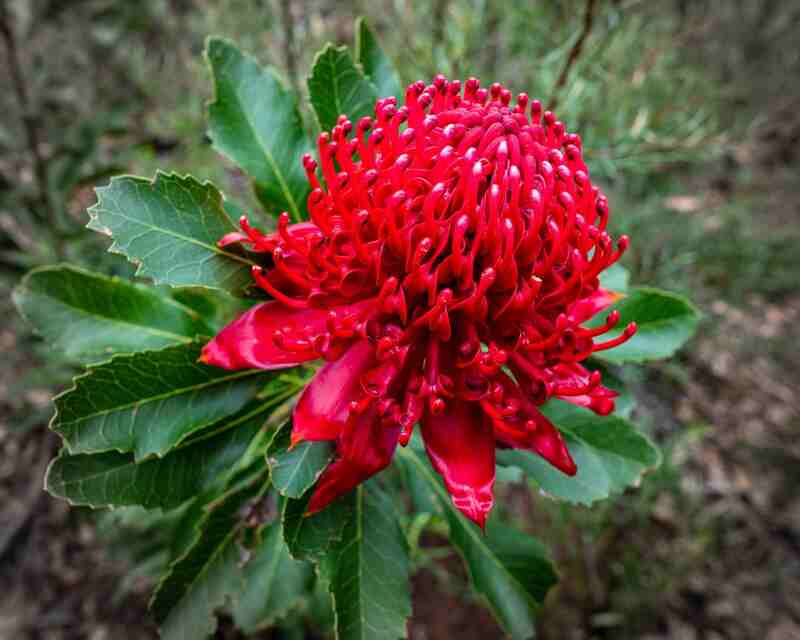There’s something undeniably enchanting about wildflowers. Their resilience, diversity, and simple elegance have captured the hearts of many nature enthusiasts, including Mr Roses in Melbourne, Australia, in particular boasts an abundance of native flower species, which not only add color and beauty to the landscape but also provide numerous ecological and health benefits. In this blog post, we’ll delve into the mesmerizing world of wildflowers, exploring their allure and advantages while appreciating the unique flora of this magnificent continent.
Australia’s Wildflower Wonderland
Australia is home to a vast array of wildflower species, with many found nowhere else in the world. From the spectacular displays of Western Australia’s wildflower season to the delicate beauty of the Snowy Mountains’ alpine flowers, the variety and charm of Australia’s native blooms are unparalleled. Some popular and iconic wildflowers you may encounter include:
- Kangaroo Paw: Known for its distinctive paw-shaped flowers, this uniquely Australian plant comes in various colors, including red, yellow, and green.
- Waratah: A striking plant with large, crimson flowers, the waratah is native to southeastern Australia and is the floral emblem of New South Wales.
- Banksia: With over 170 species, these hardy plants are characterized by their unique, cylindrical flower spikes and serrated leaves.
- Sturt’s Desert Pea: This stunning wildflower has vibrant red flowers with a black central boss, making it an eye-catching addition to Australia’s arid landscapes.
Ecological Benefits of Native Wildflowers
Native wildflowers play a crucial role in maintaining a healthy ecosystem. They provide essential habitat and food sources for native wildlife, including birds, insects, and mammals. Additionally, they contribute to soil health and nutrient cycling, supporting a diverse range of plant and animal species.
By planting native wildflowers in your garden, you can help to:
- Attract and support pollinators, such as bees and butterflies, which are essential for the reproduction of many plants.
- Provide habitat and food for local birds and other wildlife.
- Conserve water, as native plants are generally well-adapted to local climate conditions and require less irrigation.
- Reduce the need for pesticides and fertilizers, as native plants are better equipped to resist pests and diseases.
Health and Well-being Benefits of Wildflowers
The beauty of wildflowers can also have a positive impact on our mental and emotional well-being. Research suggests that exposure to nature, including wildflowers, can help to reduce stress, boost mood, and improve cognitive function. By incorporating native wildflowers into your garden or outdoor spaces, you can create a sanctuary that promotes relaxation and mindfulness.
Additionally, some wildflowers have traditional medicinal uses among Indigenous Australians. For example, the tea tree is well-known for its antibacterial and antifungal properties. At the same time, the lemon myrtle has been used to treat various ailments, including colds and skin conditions.
Tips for Growing Wildflowers in Your Garden
Growing native wildflowers in your garden can be a rewarding and environmentally friendly way to enjoy their beauty and benefits. Here are some tips to get you started:
- Choose local species: Select wildflowers native to your region, as these will best suit your local climate and soil conditions.
- Prepare the soil: Many wildflowers prefer well-draining soil, so consider adding sand or organic matter to improve soil structure if necessary.
- Plant in the right season: Most wildflowers should be planted in autumn or winter, allowing them to establish strong root systems before the warmer months.
- Water wisely: While native plants generally require less water than exotic species, be sure to provide adequate moisture during the establishment period. Once established, water requirements will typically decrease.
- Protect from pests: Although native wildflowers are often more resistant to pests and diseases, monitoring for any issues and treating them promptly using eco-friendly methods is still important.
- Encourage biodiversity: Plant a variety of wildflowers to attract different pollinators and support a diverse range of wildlife.
Conclusion
Australia’s native wildflowers are truly a sight to behold, offering a unique and captivating display of colors, shapes, and scents. Not only do they contribute to the country’s rich biodiversity, but they also provide important ecological and health benefits. By incorporating wildflowers into your garden, you can enjoy a vibrant, low-maintenance landscape that supports local wildlife and promotes well-being. So why not embark on a journey to discover the beauty and rewards of native flower species?


